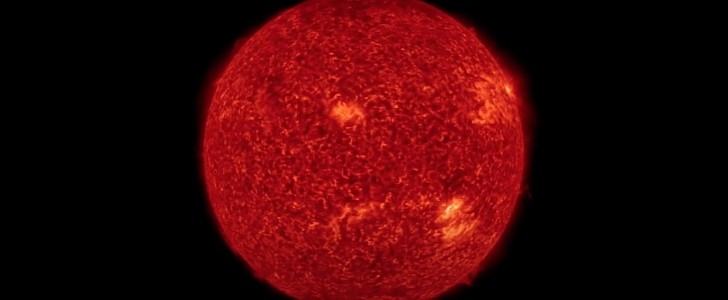The sun wanted to offer us an early fourth of July present this year, with a rare sun blast that was last seen occurring four years ago. The eruption was caught on camera.
The solar flare occurred on early Saturday, at approximately 10:30 am EDT (Eastern Daylight Time), and the last time such a strong sun blast took place was in 2017. This year’s event came from a sunspot called AR2838 and produced what scientists call an X1-class sun event, which is the most powerful one of its kind.
It happened extremely quickly, as these are highly unpredictable events, as explained by astronomers. But NASA’s Solar Dynamics Observatory caught in on video and provided footage of the X1 sun blast. You can see the blast on the right side of the sun. The solar flare was caught by the observatory in several wavelengths.
The eruption also caused a minor M2 flare, as reported by officials, which led to a short radio blackout over the Atlantic and the shore areas. The blackout was best noticed by aviators, marines, and radio operators.
These solar flashes can be classified into five categories, depending on how strong they are. There are class A, B, C, M, and X solar flares, with the latter being the strongest one, which is where our recent event falls in.
These flares appear as an increased brightness on certain spots on the surface of the sun and a lot of times are accompanied by coronal mass ejections (CME). The X-class ones can interfere with power grids on our planet, can cause intense geomagnetic storms, as well as pose a risk to satellites and astronauts in space. The particles from a CME reach our planet after a few days. However, even though this was a big one, there appears to be no risk of a CME with the flare.
It happened extremely quickly, as these are highly unpredictable events, as explained by astronomers. But NASA’s Solar Dynamics Observatory caught in on video and provided footage of the X1 sun blast. You can see the blast on the right side of the sun. The solar flare was caught by the observatory in several wavelengths.
The eruption also caused a minor M2 flare, as reported by officials, which led to a short radio blackout over the Atlantic and the shore areas. The blackout was best noticed by aviators, marines, and radio operators.
These solar flashes can be classified into five categories, depending on how strong they are. There are class A, B, C, M, and X solar flares, with the latter being the strongest one, which is where our recent event falls in.
These flares appear as an increased brightness on certain spots on the surface of the sun and a lot of times are accompanied by coronal mass ejections (CME). The X-class ones can interfere with power grids on our planet, can cause intense geomagnetic storms, as well as pose a risk to satellites and astronauts in space. The particles from a CME reach our planet after a few days. However, even though this was a big one, there appears to be no risk of a CME with the flare.







